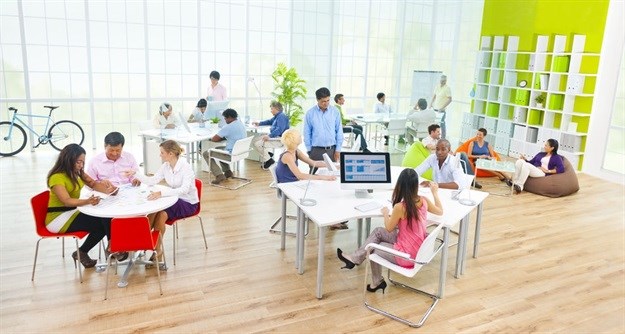
Hassan Shaikh, founder of Revolve, a specialist corporate and retail interior design strategy agency, says many South African companies are not considering this in their workplace design as to how it suits their culture and employees.
“Companies do much strategic thinking around business but often when it comes to utilising their space, there is not enough expertise and thought applied to how the space needs to drive profitability. They seldom explore how the physical location of an employee and proximity to others can influence his/her productivity and performance.
“Physical space appears to be an underutilised resource that companies can use to enhance organisational performance and knowing how to rearrange employee seating may be one of the most cost-effective resources at their disposal.”
Two years of research from Cornerstone found that for an organisation of 2 000 workers, strategic seating planning could add an estimated $1 million per annum to profit. It showed how performance and work quality is significantly impacted when one groups the right types of co-workers together.
This study measured the effects of performance spill over – both positive and negative – and found that a symbiotic pairing of workers in physical space can greatly improve performance. It showed that neighbours have a significant impact on an employee’s performance – either positive or negative.
Shaikh says it is important for corporates to understand just what type of employees they have as this affects the spatial design. In the study, three types of workers were grouped: productive workers, who completed tasks quickly but lacked quality, quality workers, who produced superior work but did so slowly and finally generalists, who were average across both dimensions. In general, 25% of workers tend to be productive, 25% quality workers and the balance generalists. The study showed the best seating arrangements was to place productive and quality employees together as this creates a spill over effect on both employees’ areas of weakness. In fact, there was a 13% gain in productivity and a 17% gain in effectiveness. Of interest, seating like with like employees did not show any significant improvement.
“Better understanding of employees can enhance individual and team performance but it does need management insight to determine where they want the most spill over to occur. This can be done by fully engaging with employees in the organisation and understanding what works for them and what they feel needs to be improved on, with a space and needs audit. One also needs to appreciate that the optimal seating arrangement for one organisation may not be the best for all.
“Space ideally needs to be designed in such a way that it allows employees to focus, collaborate, learn and socialise. This requires a shift away from a traditional, one-dimensional floor plan to multifunctional, multidimensional workspaces.
“Creating spaces that are flexible and tailor-made to specific business needs is critical. Office space is a tool to support business and there is a strong business case, which supports the notion of workplace design influencing performance. If one can plan the space of an organisation well enough to produce better outcomes, physical space suddenly becomes an important business resource,” concludes Shaikh.